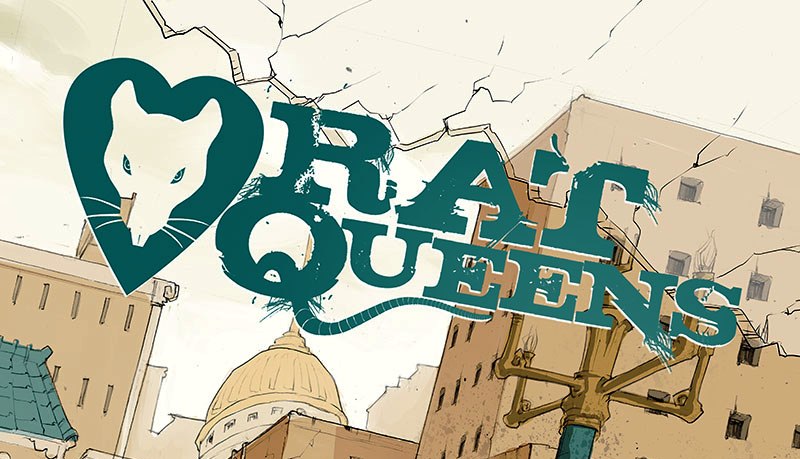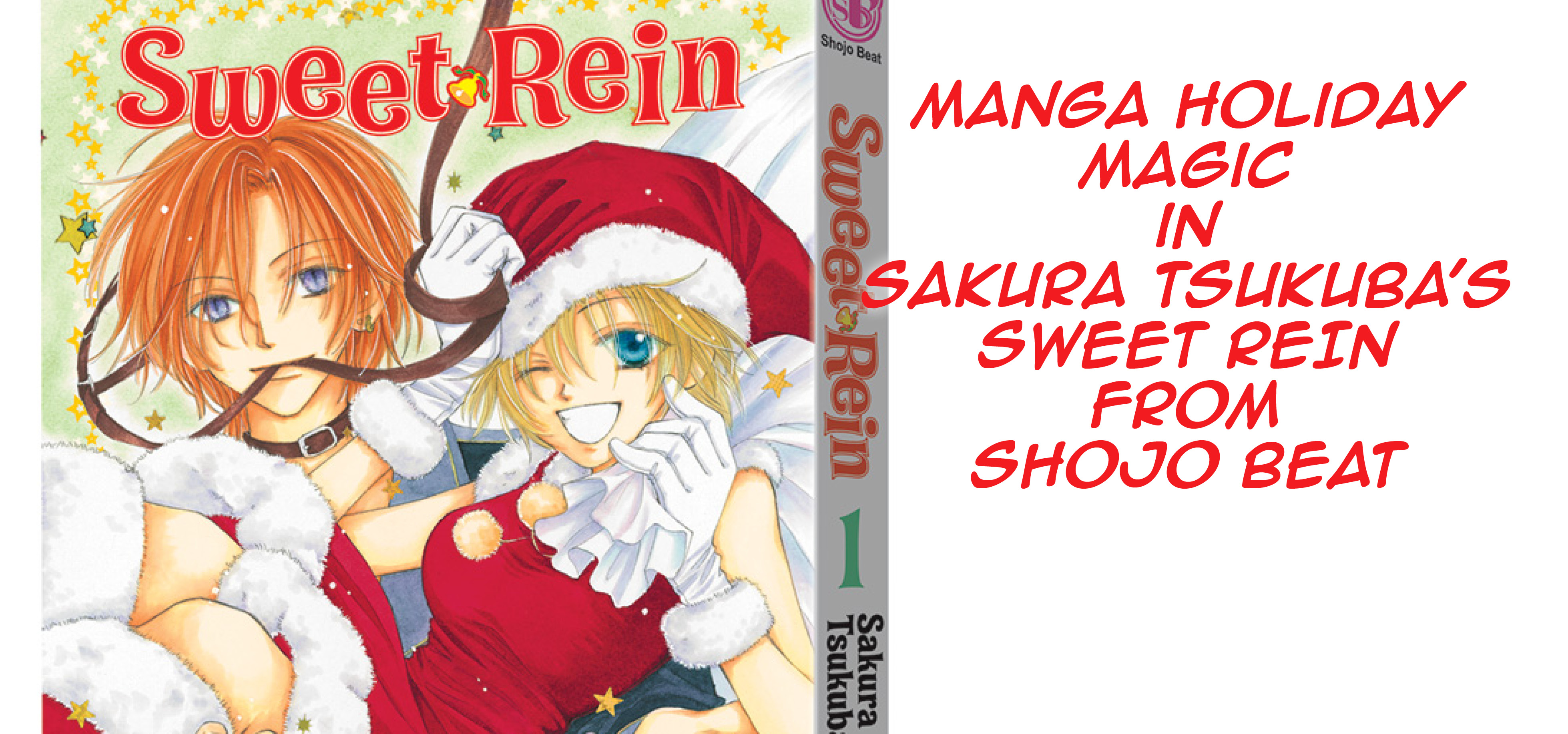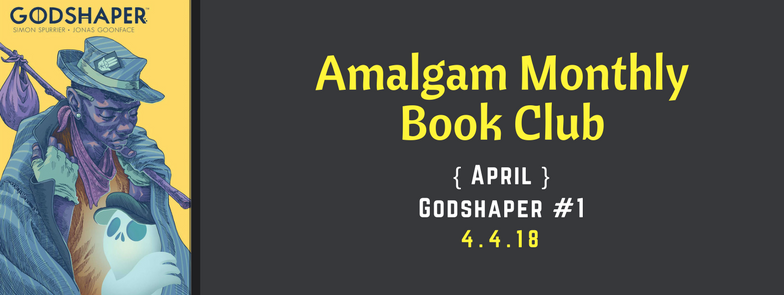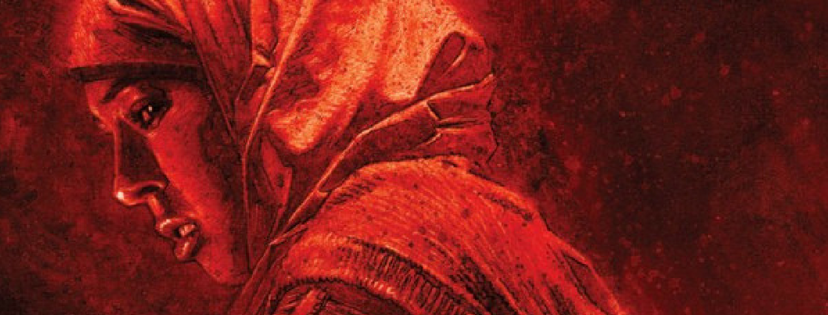The Rat Queens are, supposedly, the heroes of this story. The all-female Rat Queens (Dee, Hannah, Betty, and Violet) are one of many groups of adventurers working out of the town of Palisade where they’ve rightfully earned a reputation for unchecked violence and copious property destruction. After their latest escapade, the Rat Queens are given what is basically public service: complete a quest and the drunken brawl that wrecked most of downtown would be forgotten. Only they reach the destination of their quest to find an assassin laying in wait. Kurtis J. Wiebe does the words, Roc Upchurch the art, and the Rat Queens kick the ass.
Rat Queens Volume One: Sass and Sorcery is a whirlwind of violence, sex, candy, and drugs. Not for the faint of heart or the prudish, Rat Queens is not your mother’s D&D campaign (unless you have, like, the coolest mom ever). Rat Queens is stupidly violent with smart, self-aware humor, it’s got a diverse cast and four well-written, well-drawn female leads, everyone has problems with their parents and figures of authority, it’s great, but I have mixed feelings about it as a whole.
The Dungeons & Dragons vibe is strong in Rat Queens. Anyone who’s played can spot the references from -4 to initiative to spell components to Adventurers’ Guilds. That said, you don’t need to have any knowledge of D&D mechanics to understand Rat Queens. The references are for the most part subtle to the point that the uninitiated can sweep past unaware while anyone with basic knowledge of D&D gets to be in on the joke.
Largely that D&D vibe comes from the characters themselves. Like so many D&D players, the Rat Queens behave as if their actions have zero consequences. They run around their somewhat generic fantasy landscape like power-drunk demigods, destroying anything (or anyone) in their path. Which isn’t a bad thing at all as long as it helps work towards a meaningful story, and it does create a nice tension between the Rat Queens and everyone else in their world, along with the added bonus of destruction, which can only add to the entertainment value.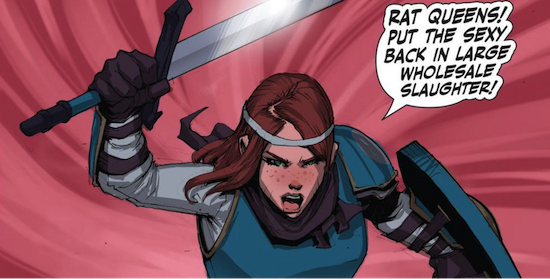
The Queens get to be something that a lot of female characters don’t: complicated. Even with their destructive habits the Rat Queens are sympathetic, relatable people. They have dating problems, crises of faith, and parental problems. The Rat Queens can be crass one second and caring the next, and they aren’t cold or emotionless because they aren’t forced to sacrifice being female to be badass. In our media, from films to comic books, women who kicks ass often isn’t allowed to still act like a woman. It’s so common to see her feminine characteristics- her empathy, her softness, her ability to care- stripped away, as if the only way women can be powerful is to mimic men and masculine traits. The Queens kick gender binaries to the curb. The Queens fight and swear, the Queens love and lust, the Queens do what the Queens want to do, consequences be damned.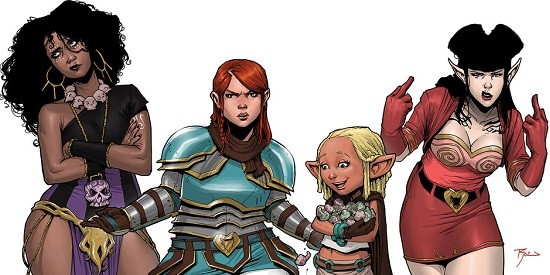
What makes this series stand out among the comic throng is that the main characters are female. Which is sad. It shouldn’t be newsworthy when women get written well, and reading through Rat Queens it became apparent that if you changed the genders of the main characters to male a lot of the humor fell a bit flat. The jokes are funnier because we don’t expect women to swear, to fight, to take drugs, to have casual, fun sex.
Upchurch’s character designs and background art add just the right amount of realism to what is a very unrealistic comic. His characters are dynamic and life-like which any great comic book needs. The characters, both male and female, wear impractical armor and clothing that cuts just short of being revealing, but when Upchurch draws them they’re too human to be objectified. The cast is diverse and made up of different shapes and sizes, although the Rat Queens still come off as petite, even the dwarf.
While the Rat Queens are fun to read, they don’t grow out of the simple archetypes they start out as. Volume One sets up each character’s backstory, subplot, and possible avenues for character development, but the story doesn’t get far before the volume ends. In the end, Rat Queens introduces so many elements that it suffers under its own weight and creates a story that moves slowly, to the point that the end felt like it came too soon, and it was hard not to feel cheated as the volume ended.
That said, “It left me wanting more” is usually a sentence you find in a positive review, isn’t it? And I’ll be buying the next volume, and for some creators that is sort of the end game other than “make an interesting and compelling story,” and Rat Queens compels it’s reader like a catapult.
4 out of 5 stars
Mallory Hagmann is a staff writer for Girls in Capes. Her interests include webcomics, poetry, fantasy and sci-fi novels, and whatever she’s fished from her local comic book store this week. She can be found in Denton, Texas.
Looking for more comics reviews? Check out our list of recommended Captain America comics.
